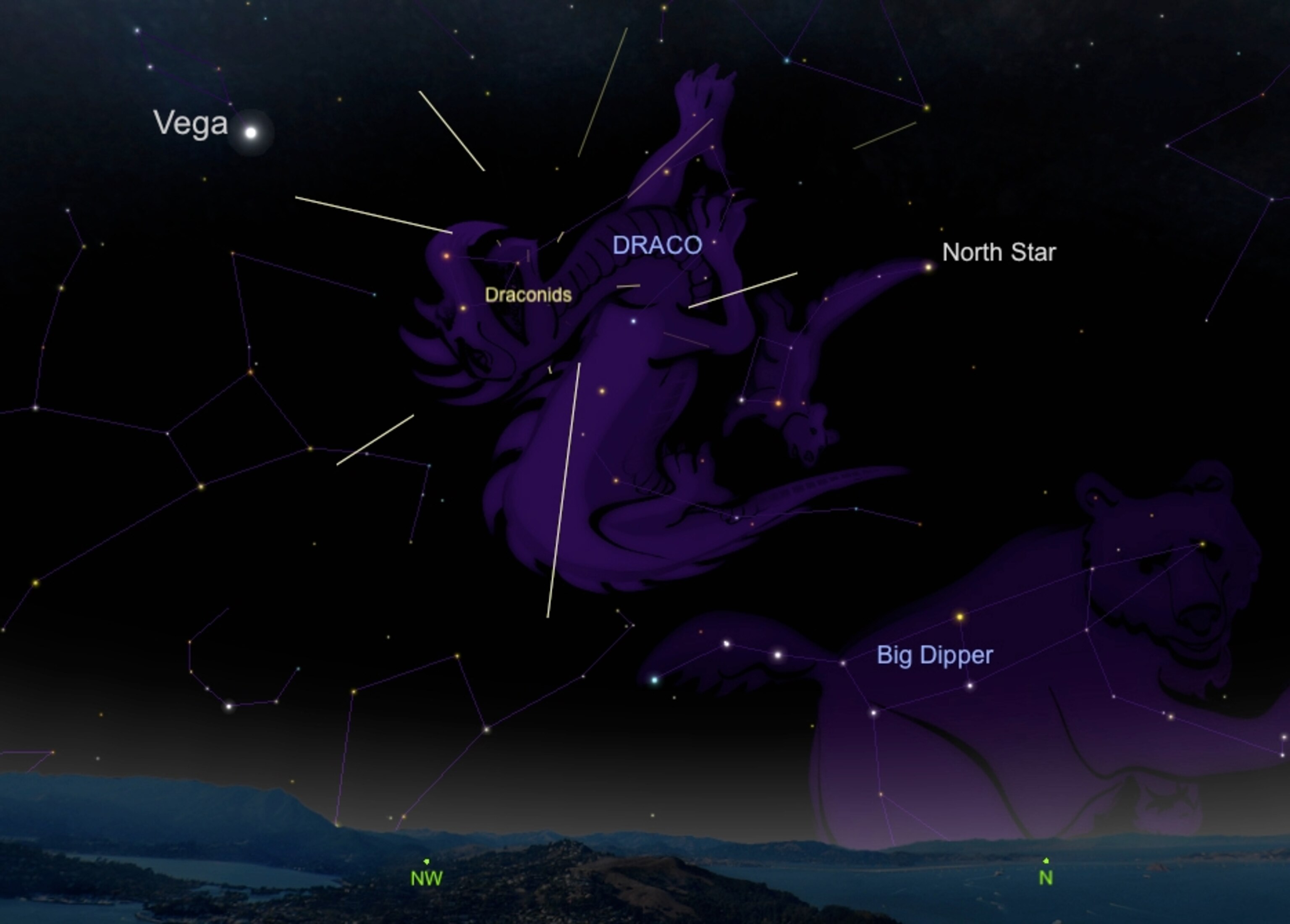
Spectacular Meteor Shower This Week: How to See It
Watch the Draconids shoot through the sky Thursday and Friday on moonless nights that promise great views.
The temperamental annual meteor shower known as the Draconids peaks this week under dark skies, offering skywatchers a nearly perfect chance to see as many as two dozen shooting stars per hour.
The Draconids are predicted to reach peak performance late Thursday night into the predawn hours Friday morning, and some should remain visible Friday night. With a new moon predicted only a few days later on the 13th, the skies should be free from any lunar glare during the best viewing times.
Meteor showers occur when Earth slams into a stream of tiny particles, many the size of sand grains, that fly off a parent comet, which in this case is 21P/Giacobini-Zinner. This cometary debris burns up in our upper atmosphere and creates a streak of light.
A Dragon Show
Like other meteor showers, the Draconids get their name from the constellation where they appear to originate in the sky—in this case Draco, the dragon. The meteors will appear to streak out of Draco nearly overhead for viewers throughout the Northern Hemisphere, around midnight local time.
The constellation is the eighth largest in the entire sky, so large that it wraps itself around the North Star, Polaris. Famous neighbouring constellations include Ursa Major and Ursa Minor, the great and small bears of mythology.
How to See It
The Draconids shower takes place every October, from the 6th to the 10th. The most intense activity is predicted to occur this year on October 9 at 5:40 Universal Time (1:40 a.m. EDT). This bodes well for onlookers in North America, as the peak will coincide with the darkest time of the night for them.
And while most years see about 20 shooting stars per hour at peak times, some years have seen those rates unexpectedly skyrocket and become true meteor storms. Twice in the last century, 1933 and 1946, upwards of 500 Draconid meteors burst through the sky per hour. And in 2011, hourly rates reached 300 just before the parent comet swung by the sun, a spectacular outburst. However, bright moonlight at the time blocked out all but the brightest shooting stars.

While unlikely and rare, these massive upticks in meteor numbers can also occur when Earth slams into an uncharted but particularly dense part of the meteor stream left behind by the parent comet.
One tip for the best viewing experience is to escape light-polluted cities to the dark countryside, where even the faintest meteors can be seen.
No need for telescopes or even binoculars, as the individual streaks of light can appear over large spans of the overhead sky. So it’s important to find a viewing spot, such as an open field, with unobstructed views of the entire sky.
Just make sure to make yourself comfortable for a few hours. Bring a reclining lawn chair, blankets and some hot chocolate—and you’ll be set to make plenty of wishes.
Clear skies!
Follow Andrew Fazekas, the Night Sky Guy, on Twitter, Facebook, and his website.





